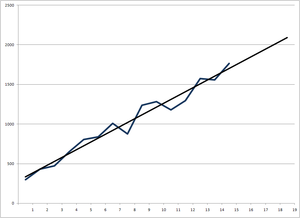As the year winds down, many of us have been highlighting the top trends for 2013. For some reason, while trends can be interesting at any time of year, when the end of the year is within hailing distance, we somehow ratchet up the trend analysis–that’s a trend you can count on every December. But one trend for 2013 seems to be hiding in plain sight. What is it? Well, first let me give you a few clues. And actually, “plain sight” is the first clue. Here are a few more…
- On Facebook, the #2 site on the web in terms of traffic, consumers upload 2.5+ billion photos a month (a number sure to increase now that Facebook will automatically upload every photo you take if you opt-in).
- YouTube, the #3 site on the web, sees some 72 hours of video uploaded every minute of the day. People watched over 1 trillion videos in 2011 (or about 140 views for every man, woman, and child on the planet).
- Pinterest, a site that only opened to the public at large in August of this year, is now one of the top 35 most visited sites on the Web, gaining more traffic (according to Alexa) than Apple, Blogger.com, or Craigslist.
- A record 8 million people logged into YouTube at the same time to watch Felix Baumgartner jump from the edge of space earlier this year. In TV terms, it would have been the highest-rated program of that week.
It should be easy to see what all these stats have in common: The web’s shift to visual content.

Once upon a time, the web was all about text. But that’s not going to be the case for much longer (if it even is the case any longer).
Your customers increasingly expect you to include rich visual content as part of their experience online. Whether through photos or video, consumers want a deeper, more immersive experience. And nothing’s more immersive than large, beautiful imagery and HD-quality video.
What may surprise you even more is that the shift to mobile is accelerating this trend. Despite its small form factor, 66% of mobile phone users watch an hour or more of video on their phones each week and, according to Nielsen, slightly more people around the world own smartphones than own HDTV’s. Mobile video consumption is North America grew 27% last year. And where do you think all those photos uploaded to Facebook are coming from? The introduction of tablets, larger phones and 4G technologies make video on mobile much more today’s reality than tomorrow’s.
Of course, your customers also expect that experience to be fast and relatively seamless. So the challenge as you move into next year is to make sure you’re creating and curating more visual content while working with your friends in IT to find the right infrastructure for even more imagery and video down the road.
Some tips to get you started:
- Leverage existing assets. You probably have a lot of brand imagery around already. Whether photos or videos, share them on Pinterest, YouTube or Tumblr (with links back to your site, of course).
- Enlist your customers to create content. Every phone on the market these days comes equipped with a camera. Encourage your customers to share their experiences with your products and services via photos either on Pinterest, Facebook or Twitter (though learn from others’ mistakes first).
- Do it wrong quickly. As Mike Moran likes to say, there’s a great benefit in doing it wrong quickly. Not every video or photo has to be world-class professional. Taylor Guitars’ simple, honest video response to the “United Breaks Guitars” debacle of a couple years ago has racked up over 650,000 views and almost 1,500 likes on YouTube.
It’s easy to see (pun intended) that video and photos are becoming a huge part of your customers’ experience online. We’ve all heard that a picture is worth a thousand words. So as you begin to execute your content marketing for 2013, plan on including more visual content and let those pictures tell your brand story for you.





